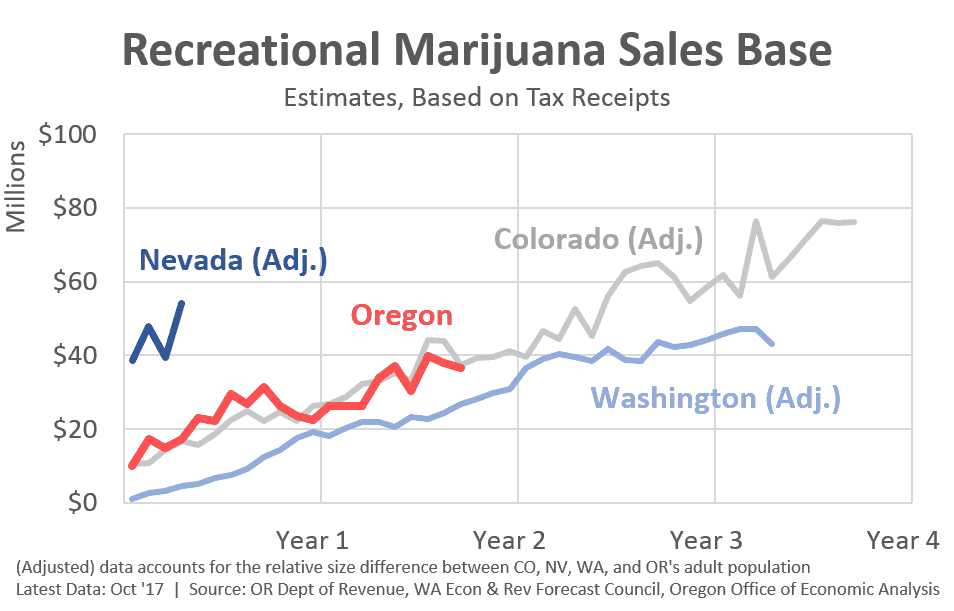
On the surface, Colorado and Oregon may look like similar markets.
Both have multiple years of legalization under their belt along with growing sales numbers and government tax revenue.
They also had similar population-adjusted cannabis revenue in the first 18 months of recreational sales and share the same number of retail marijuana stores.
But that's where the similarities end.

Source: Oregon Economic Analysis
Colorado and Oregon Marijuana Production Differences
In 2017 Colorado grew 340,000 kg of legal marijuana and sold 90% of it to consumers. The black market is estimated to make up 25% of sales.
In contrast, Oregon produces 750,000 kg annually and only 30% is ever sold legally, meaning the rest is destroyed or sold on the black market, many times across state lines.
What explains this stark difference?
It all comes down to regulations.
Colorado and Oregon serve as a perfect case study of the impact good and bad regulations can have on a legal marijuana market.
Canadian regulators should be paying close attention.
What Did Colorado Do Right?
When Colorado began handing out retail growing licenses in 2014, they made a smart decision to grant current medical growers a right of first refusal for licenses.
This decision gave medical growers a strong incentive, through less time and money spent on the licensing process, to transition to the legal recreational market, and removed a potential source of future black market supply.
An Indirect Cap on Licenses
Colorado made another smart move when they structured licenses to have a flower cap.
A grower is given a license to grow 500 plants for example and can only apply for additional capacity if they can prove to the state that it's selling at least 85% of supply to customers in the legal market.
Setting up the licensing process this way prevented growers from building capacity in excess of market demand, without explicitly putting a cap on licenses.
An open licensing process allows all producers to have a shot at competing in the market, while the plant limit largely protects the market from an acute oversupply.
What did Oregon Do Wrong?
Oregon, on the other hand, did not offer licensed medical growers preferential treatment when recreational licenses were released, assuring there was a meaningful supply of marijuana that was at risk of failing to convert to the legal market.
Unlimited Licenses
Oregon also decided not to put a cap on licenses or the number of plants grown, increasing the risk that a flood of supply from all these new growers would overwhelm state demand, which is exactly what happened.
What Canadian Regulators Can Learn
Canadian government officials formulating the rules on recreational cannabis should be watching what is happening in legal US states closely.
For Canada, eradicating the black market accomplishes two important goals.
First, it removes a funding source for criminals and second, it reduces black market supply, limiting the length and severity of any oversupply that could result in the early years of recreational consumption.
Legal oversupply in Canada would be even more damaging than in Oregon because even though Canada's borders are still porous, publicly traded producers in Canada have too much to lose if caught selling to the black market.
Following the rules means excess legal marijuana will have nowhere to go if it can't be sold into legal retail channels.
An oversupply at the legal level will lead to marijuana piling up unsold in grower's warehouses and large write-offs to earnings, which would crush cannabis stock prices.

When it comes to licensed producer stocks, limiting legal volumes will be critical to fostering profitability.
If the government wants to destroy the black market and support licensed producers at the same time, regulations will be the number one policy tool to accomplish these two goals.
Colorado represents a solid roadmap, while Oregon should serve as a warning of what can happen if regulations aren't created with thought and care.
Read the full article
